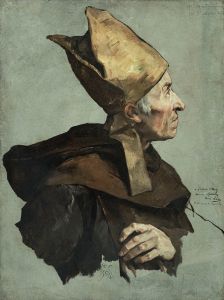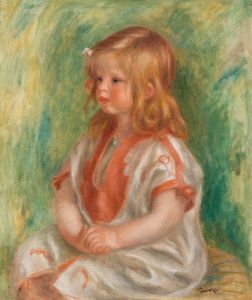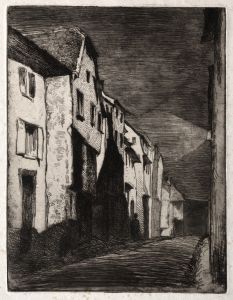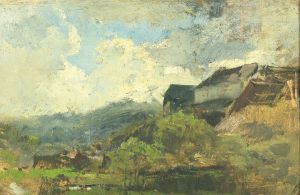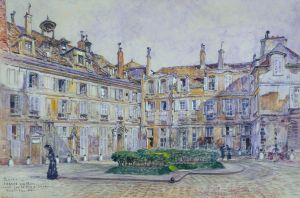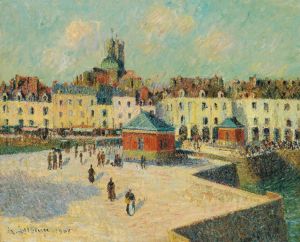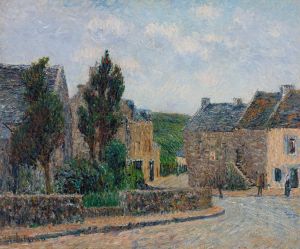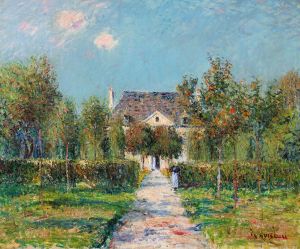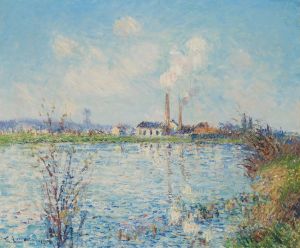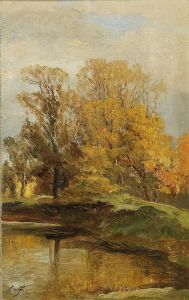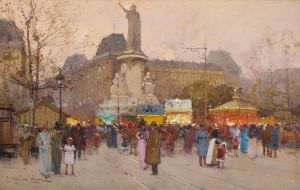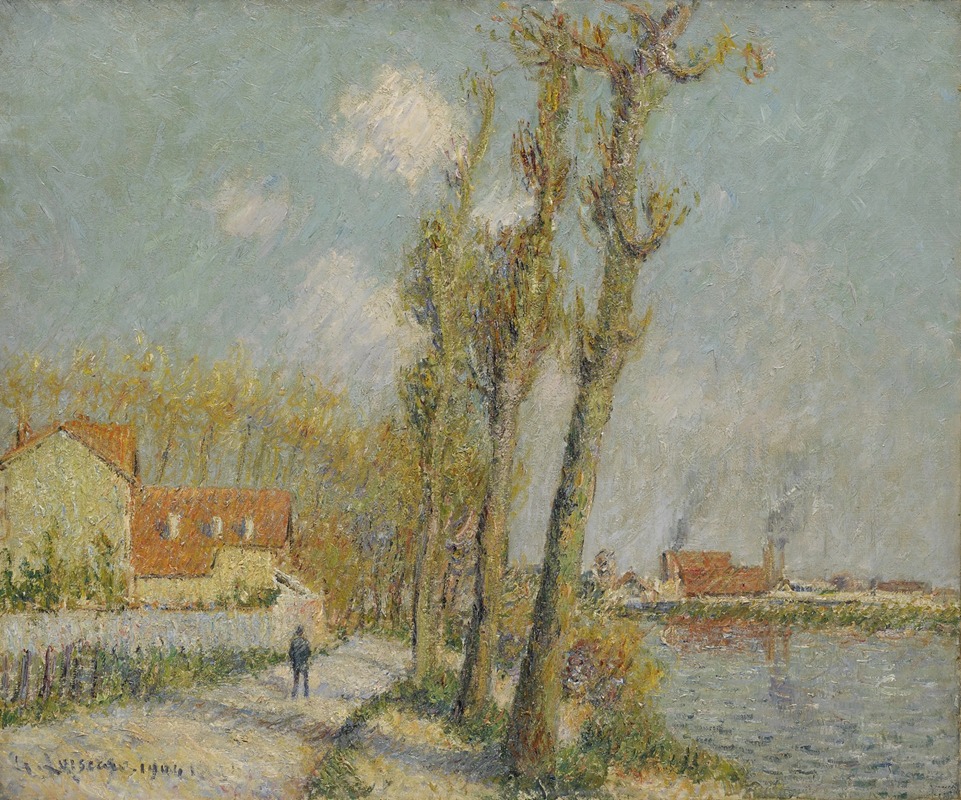
L’Oise à Pontoise
A hand-painted replica of Gustave Loiseau’s masterpiece L’Oise à Pontoise, meticulously crafted by professional artists to capture the true essence of the original. Each piece is created with museum-quality canvas and rare mineral pigments, carefully painted by experienced artists with delicate brushstrokes and rich, layered colors to perfectly recreate the texture of the original artwork. Unlike machine-printed reproductions, this hand-painted version brings the painting to life, infused with the artist’s emotions and skill in every stroke. Whether for personal collection or home decoration, it instantly elevates the artistic atmosphere of any space.
Gustave Loiseau (1865–1935) was a French Post-Impressionist painter known for his landscapes and depictions of rural life. One of his notable works, L’Oise à Pontoise, captures the serene beauty of the Oise River as it flows through the town of Pontoise, located in the Île-de-France region of northern France. This painting exemplifies Loiseau's characteristic style, which often combined elements of Impressionism and Pointillism to create vibrant, textured scenes of nature.
Loiseau's artistic approach was heavily influenced by his close study of light, atmosphere, and seasonal changes in the French countryside. In L’Oise à Pontoise, he employs a soft yet dynamic palette to depict the interplay of light on the river's surface and the surrounding landscape. The brushstrokes are fluid and rhythmic, reflecting his interest in capturing the fleeting effects of light and movement. The painting also demonstrates his use of the "en treillis" technique, a distinctive cross-hatched brushstroke method that became a hallmark of his work.
Pontoise, the setting of this painting, was a popular location for artists during the late 19th and early 20th centuries. It was famously associated with Camille Pissarro, one of the leading figures of Impressionism, who lived and worked there for many years. Loiseau, like many artists of his time, was drawn to the region for its picturesque scenery and its historical significance as an artistic hub. The Oise River, in particular, provided a tranquil and inspiring subject for painters seeking to explore the interplay of water, light, and the natural environment.
While specific details about the creation of L’Oise à Pontoise are not widely documented, the painting is representative of Loiseau's broader body of work, which often focused on rivers, villages, and rural landscapes. His paintings are celebrated for their ability to evoke a sense of place and time, capturing the essence of the French countryside with a poetic sensibility.
Today, Gustave Loiseau's works, including L’Oise à Pontoise, are held in private collections and museums around the world. They continue to be appreciated for their technical skill and their contribution to the Post-Impressionist movement, bridging the gap between the Impressionist focus on light and the emerging modernist trends of the early 20th century.





